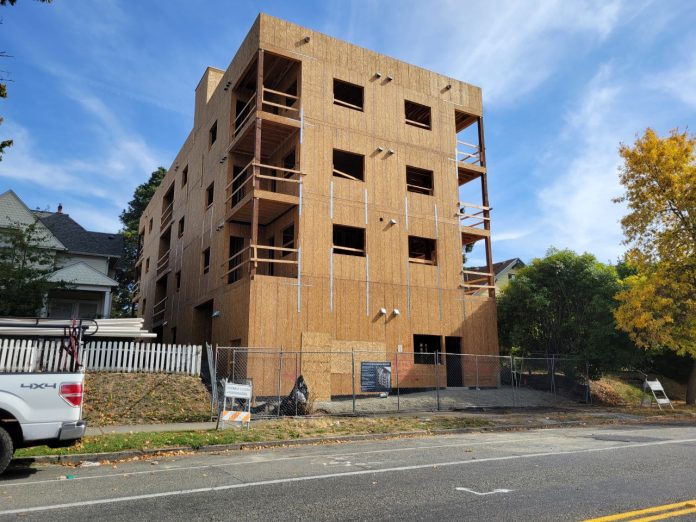Tacoma’s goal to add 59,000 homes by 2050 may take additional action by the City.
With over half a year since becoming official city policy, what impact have Home in Tacoma’s housing policy changes actually had? While the progress of individual housing developments to final completion can be hard to measure, construction permits offer us a window allowing some educated predictions on the rate of new housing development in Tacoma.
Analysis of recent permitting data highlights a small uptick in new housing developments, but it has not yet put Tacoma on pace to keep up with estimated population growth and demand. The City of Tacoma will need to do more in order to increase the rate of development, both in private and public sectors.
Like many cities in the United States, Tacoma finds itself in a housing crisis, with a particularly acute shortage of affordable housing. The situation is likely to worsen, as estimates anticipate massive population growth in the upcoming decades.
Pierce County projects that Tacoma will grow from 222,906 residents in 2023 to 325,000 by the year 2050. Tacoma’s August 2024 update to the City’s Comprehensive Plan sought to plan housing growth to accommodate that expected population growth. Tacoma had 94,531 housing units at the end of 2023, the plan noted. This growth of more than 100,000 new residents would require around 59,000 new housing units to meet demand. The Comprehensive Plan states that the 59,000 units should come from a mix of housing types allowed under the Home in Tacoma initiative.
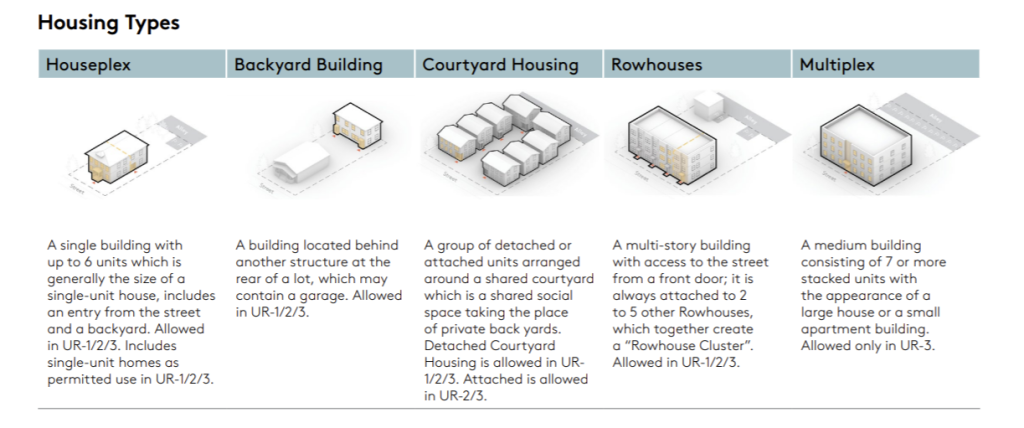
Home in Tacoma seeks to tackle the housing crisis through the allowance of medium density housing, or ‘Missing Middle’ housing, a wide variety of housing types between single family homes and large apartment blocks. This is a category lacking in recent construction in many cities, hence the “missing” descriptor. After years of public feedback and revisions, the City Council approved Home in Tacoma in November 2024, with zoning changes going into effect at the start of February 2025.
Housing by the numbers
After Home in Tacoma’s passage in November 2024, the City’s Planning and Development Services (PDS) office opened up for special Home in Tacoma pre-development reviews on December 1, 2024. This review process was intended for property owners and developers early in the building planning process to have their plans reviewed for compliance with Home in Tacoma regulations before they actually submitted applications.
With that review process in mind, this analysis includes permit applications from January 1st, 2025 through August 31, 2025 to include applications that did go through the review process or were submitted in anticipation of Home in Tacoma coming into effect. Permits submitted between January 2024 through August 2024 were also pulled for comparison. Tacoma divides permits between commercial and residential developments, a distinction that was kept to examine those differences. Note, that “commercial” developments refers to buildings falling under the commercial code, but it includes both mixed-use and residential only multifamily buildings.
Keep in mind, permits do not always ultimately lead to housing being built. As a result, these figures are rough estimates and cannot fully account for future shifts in economic or political conditions that could impact homebuilding. Further, this permits discussed here only represent eight months of data and thus do not represent a full year of development.
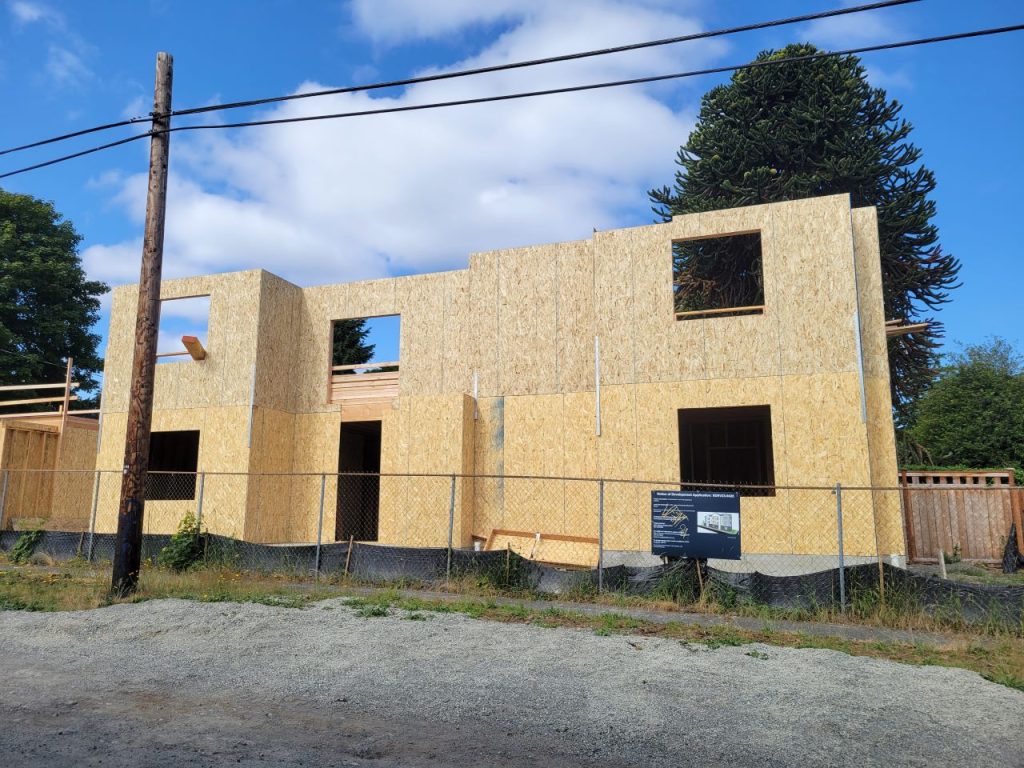
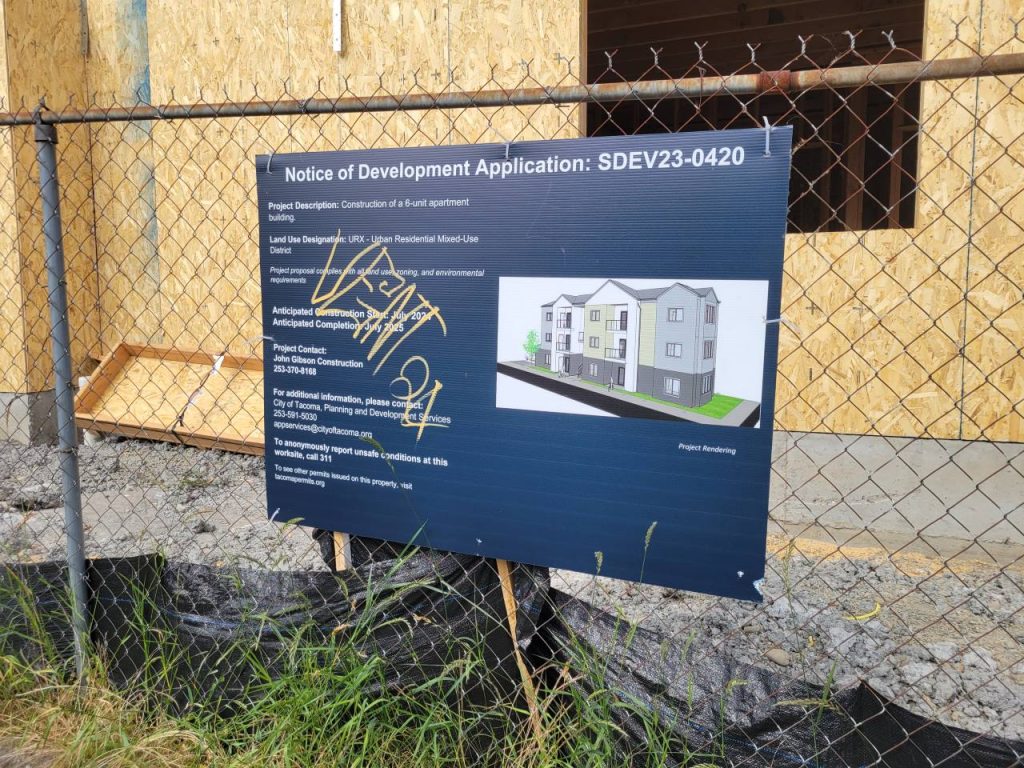
The permitting data was obtained from Tacoma’s Open Data Portal, a public database containing a variety of administrative data for the City.
Column 1 lists batches of permit applications, grouped by year and type. Column 2 lists the number of applications that plan to add housing units, with Column 3 listing the total number of potentially added units. Column 4 lists the number of applications approved as of August 31 of each year, and Column 5 lists the number of housing units that were approved.
| 1. Dataset | 2. Applications with new housing | 3. Potential New Units | 4. Approved Housing Applications | 5. Approved Housing Units |
| Residential, 2025 | 185 | 304 | 68 | 104 |
| Residential, 2024 | 159 | 181 | 129 | 146 |
| Commercial, 2025 | 58 | 1259 | 33 | 555 |
| Commercial, 2024 | 29 | 1657 | 21 | 301 |
Between the two study years, there were a total of 243 applications in 2025 and 188 applications in 2024. That increase in total applications is a good sign, as it indicates general interest in taking advantage of Home in Tacoma’s new flexibility.
Looking just at the residential applications, that is a difference of 123 potential new units with only 26 additional additional applications in 2025 compared to 2024. Additionally, when looking at total housing units per residential application, the 2024 batch only notes 1 or 2 units per application whereas the 2025 batch notes between 1 and 6 units per application.
All of this together suggests that alongside a bump up in construction activity, there is a demonstrable interest in constructing middle density housing in Tacoma in residential areas under the new Home in Tacoma policies. Brian Boudet, Tacoma’s Long Range Planning Manager, notes that where housing like townhomes, accessory dwelling units (ADUs), and duplexes were previously extremely uncommon, they are now seeing those types of applications from all over the city thanks to the loosening of zoning restrictions.
This optimistic outlook for residential housing is tempered by the significantly lower number of approved applications and approved housing units in 2025. This can be explained by the fact that 2024 permits have had more time to be reviewed, approved, finalized, and closed out. Many of the 2025 applications have yet to break ground, or are still in the review stage. By dividing the approved housing units (146) by the number of potential units (181) for 2024, we can calculate a housing unit approval rate of about 80% for that year. If the 2025 batch of applications is able to reach 80% housing unit approval, then about 243 new units would be approved for construction.
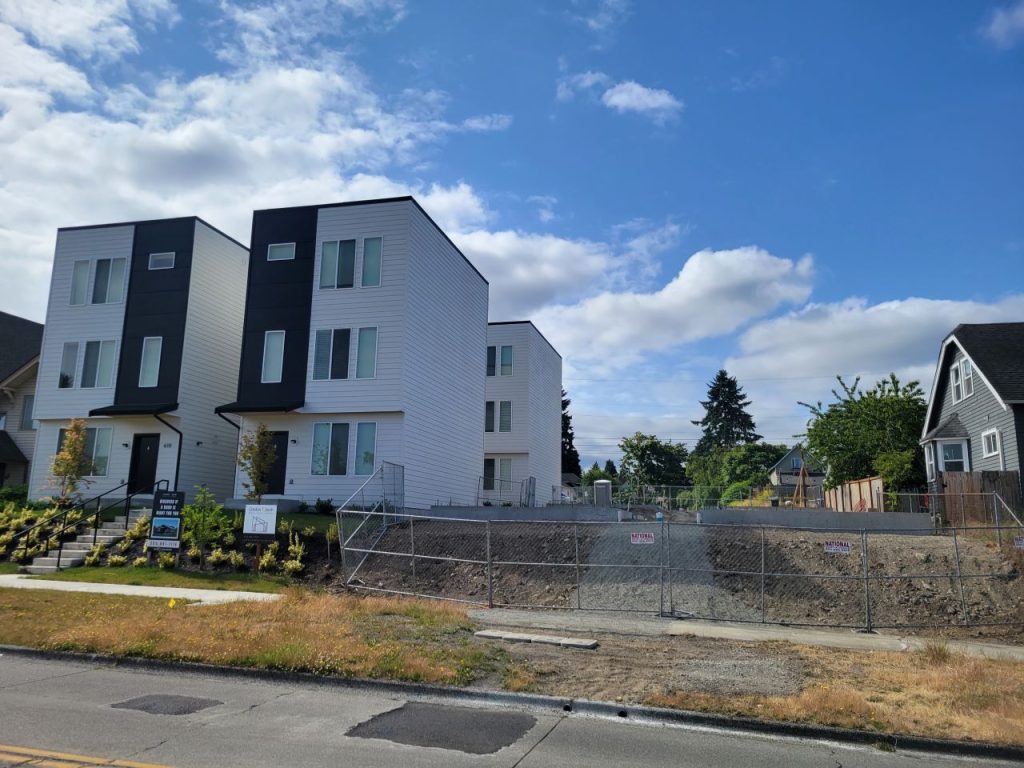
Now that we have some understanding of housing development in neighborhood residential areas, what is it looking like with larger-scale development in Tacoma’s urban neighborhoods? Commercial permit applications are picking up in Tacoma, doubling from 29 applications in 2024 to 58 in 2025. However, despite the increase in the number of applications, the number of potentially added housing units decreased by 398 between the study years. This indicates that the newer proposed developments are generally smaller in scale compared to previous years.
With such a small sample size, it is tough to pinpoint a cause or level of concern. Boudet said that the current regional economic slowdown could be making developers more hesitant, or less able to take on new construction projects. It has been a tumultuous time in the construction industry, with Trump’s tariffs driving up costs on building materials and economic uncertainty spooking investors.
So far, in terms of added housing, the 2025 commercial applications are beating the 2024 batch, with an housing unit approval rate of 44% compared to 2024’s 18%. So it appears that the 2025 commercial applications being smaller in scale is to their benefit in getting approved. Larger projects can take longer to go from application to approval due to their complexity and potential for mistakes and errors.
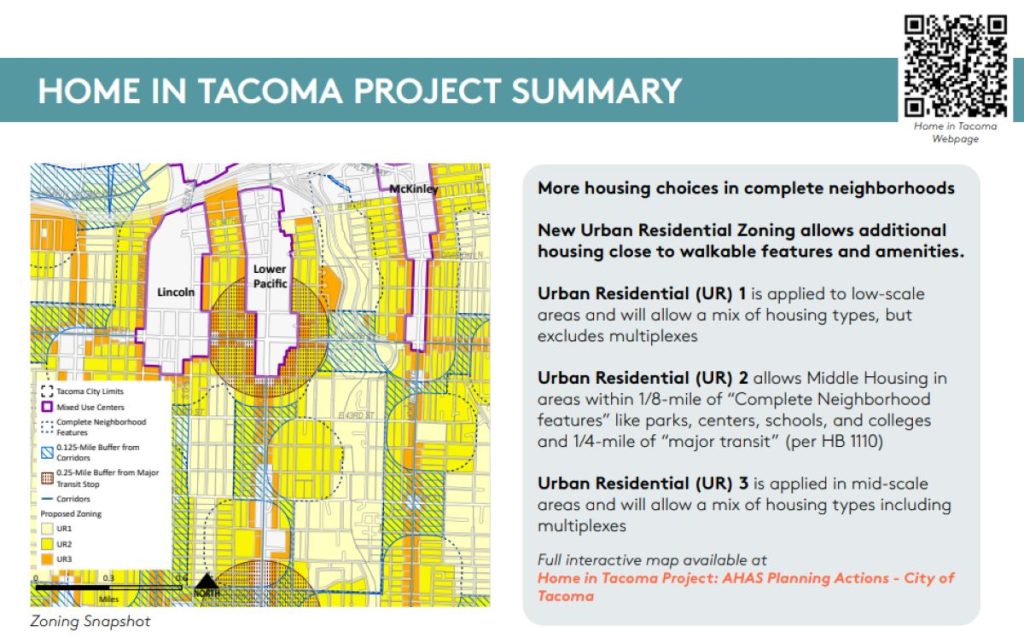
Maria Lee, a spokesperson for the City of Tacoma, said that the City views “the permit review as an iterative, collaborative process,” and that more projects would ultimately make it through to approval.
“It’s very common for an applicant to submit their initial design vision and then work with our experts to refine it,” Lee said. “Our feedback is rarely a ‘rejection’; it’s a road map. We provide specific comments that guide the applicant on how to bring their project into alignment with the code. This back-and-forth ensures the final project is safe, compliant, and contributes positively to the neighborhood, which is our ultimate shared goal.”
“When we look at the permits we’ve already issued, the data is very encouraging. Approximately two-thirds of all projects are approved in just one or two reviews,” Lee said in an email. “The high volume of activity is driven primarily by smaller-scale projects like single-family homes and Accessory Dwelling Units, which make up nearly 70% of these applications. These are often homeowners or small builders who are navigating these complex codes for the first time. The roughly 25% of applications that take three or more reviews are often those involving more complex sites or designs, where the new codes require more significant adjustments. This is consistent with what we’d expect after a major code update. We recognize there’s a learning curve, and we’re committed to helping people navigate it.”
Boudet recommends that anyone interested in housing development in Tacoma, whether a large developer seeking to build an apartment complex or single family homeowner looking to construct an ADU, use the pre-application services offered by the City before starting a permit application. The pre-application services will help a potential applicant scope out their project, assess feasibility and understand what they need to do to ensure the highest chance of approval before starting the time-intensive permit application.
In addition, both the webpages for Tacoma Permits and Home in Tacoma contain tip sheets to help those considering developing middle housing to understand the rules and offer guidance to ensure compliance.
With 25 years to reach Tacoma’s 2050 goal of 59,000 new homes, the city should be averaging 2,360 homes added per year. Even with Home in Tacoma housing reforms, the data suggests the city may miss that mark in 2025 permit approvals. Over the last two years, Tacoma has fallen shy of 2,000 units permitted per year, which typically translates into even fewer homes built as some permitted projects stall out.
Tacoma’s growth has lagged behind long-term projections recently, adding 3,000 residents per year over the last two years, according to state estimates. Regional planners project Tacoma will grow by 100,000 people by 2050, translating to about 4,000 residents each year.
Boudet cautioned that these population estimates are highly optimistic and that in the past, Tacoma has fallen short of projected growth. He agrees that more housing is needed, but is uncertain if there will be 100,000 new Tacomans by 2050. Tacoma has been noted as a highly desirable city to live in in recent years, but it is unclear if that popularity will be maintained in the upcoming decades.
Boudet emphasizes that Home in Tacoma was never intended to be a silver bullet to Tacoma’s housing crisis. He acknowledged that housing in Tacoma has trended toward unaffordability in recent years, and that the problem is far too large to be solved by a single set of changes to zoning codes. Home in Tacoma was intended to be a step in the right direction, followed by other steps. Boudet noted that Home in Tacoma is only a small portion of the City’s multi-part Affordable Housing Action Strategy (AHAS).
One of the first listed objectives in the City’s AHAS is the creation of new affordable housing, with a 2028 goal of 6,000 units. As of December 2024, the City reports only 1,564 affordable homes have been built, with 854 “coming online” for a total of 2,418 new units, or about 500 per year since the start of 2019. Maintaining that rate of production through 2050 would result in 15,000 new units.
Nonprofit and public-sector builders shouldering more of the load could help ensure Tacoma hits its housing goals, and would do even more heavy lifting on the affordability front. But all sectors would appear to need to pick up the pace to get there.
Who will take responsibility?
The other challenge for meeting growth targets is that crashes in the housing industry or the larger economy can sap momentum and lead projects to stall out. Completed permits still require builders to find financing and stay solvent to result in completed homes.
Tacoma is no stranger to stalled projects, with one recent example being an affordable housing project near Tacoma Dome intended to host 100 affordable housing units being frozen since March 2024,though there are signs that a new project owner intends to finish the project with double the original number of units. As of September 2025, the site has not seen any new activity.
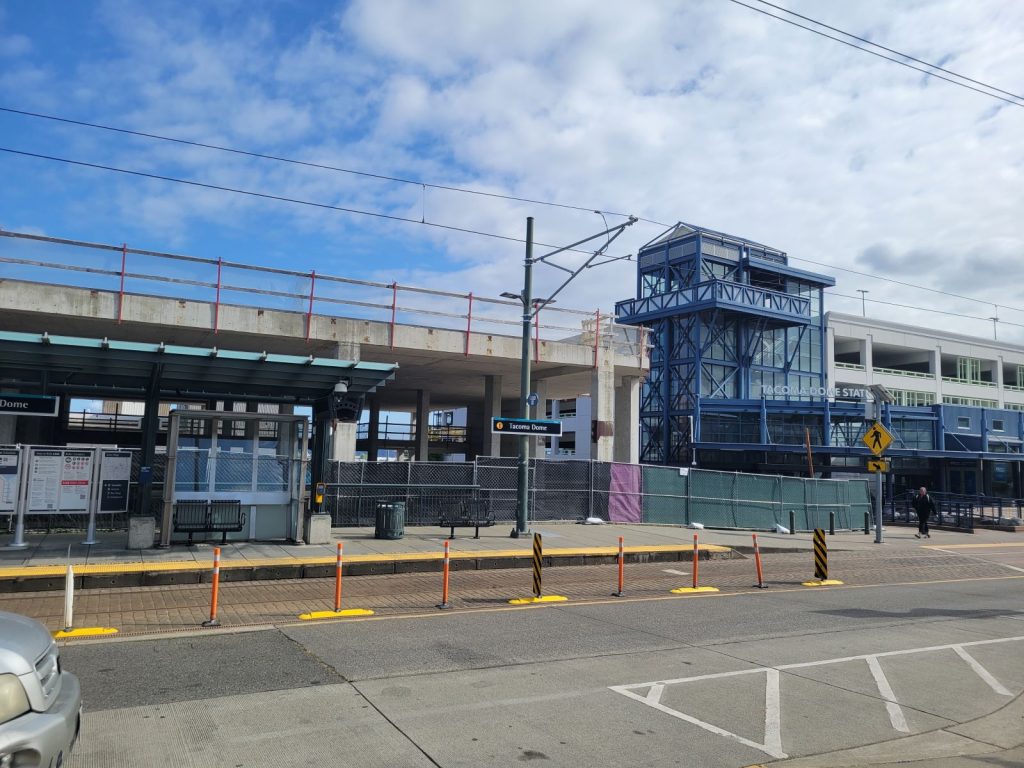
This anticipated gap of housing units is one consequence of relying on private developers to build housing, despite relatively soft interest in Tacoma’s market. While Home in Tacoma opened up flexibility in residential zones and included some incentives, it does not mean that owners and developers will choose to take advantage of those benefits — especially as they face headwinds like high interest rates and rising costs for construction materials and labor. Some are still building, but not at a rate that will meet future needs and prevent many from getting priced out.
The City of Tacoma should consider removing hurdles or expanding incentives for homebuilders to increase the rate of development across the city. City leaders should also ramp up investment in social housing given the inconsistency and unpredictability of private development. City representatives demonstrate a clear commitment to assisting applicants through the permit process; they should put some of that energy towards getting permits in the door in the first place.
Home in Tacoma was absolutely a step in the right direction to help provide housing for all. But right now, how it is being implemented and coming to life appears like it is falling short of needs.
Tacoma’ Planning and Development Services plans to share their own progress report on the implementation of Home in Tacoma to City Council on Tuesday, September 30.

Kevin Le
Kevin Le is a Geographic Information Science (GIS) professional in Tacoma. He enjoys studying spatial data to better understand our urban landscapes and redesign cities to better serve all people.

